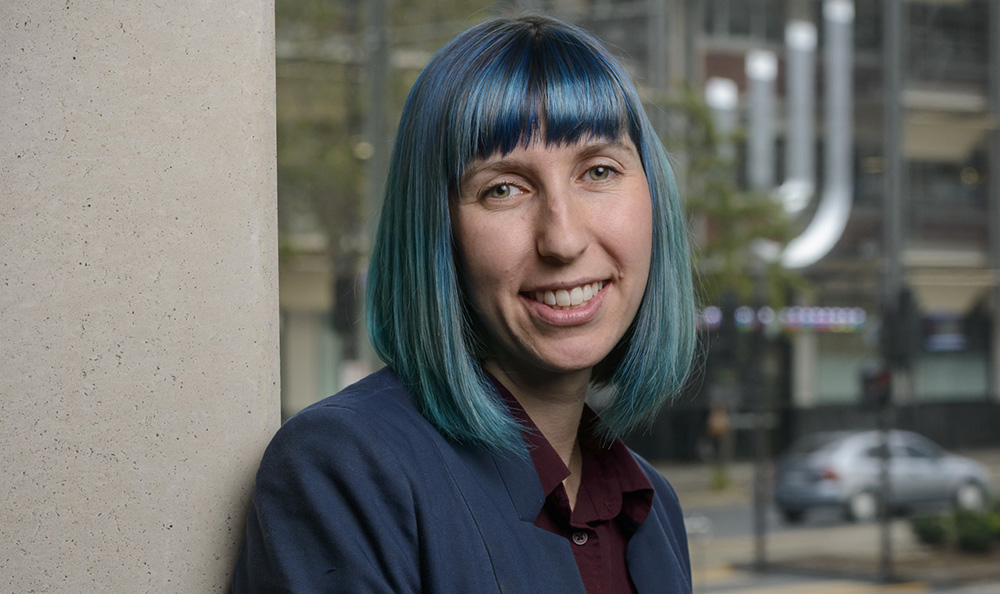Opioid prescribing to adults in Queensland has increased 11-fold over 21 years, according to recent population study research.
Most prescriptions were in the lower-dose range, with high-dose prescriptions phased out over time.
The population study examined Monitoring of Drugs of Dependence System data for opioids prescribed to patients aged 18 and over between 1 January 1997 and 31 December 2018.
Higher doses of opioids, particularly when used long-term, do not always equate to greater pain relief, said Advanced Practice Pharmacist Jacinta Johnson FPS, who will be speaking about naloxone for opioid toxicity at PSA21 this month.

‘They are, however, associated with a greater risk,’ Dr Johnson told Australian Pharmacist. ‘And for a lot of acute pain, minor surgical procedures and minor trauma, lower doses can be sufficient when used in combination with other pain management approaches.’
Dr Johnson said that 80% of people using opioids for 3 months or more experience some kind of opioid-related harm.
For most patients with chronic pain, long-term opioid use does not improve pain or function any more than placebo.
‘In some cases, opioid-induced hyperalgesia can occur and if this condition is present, increasing the opioid dose actually increases sensitivity to pain,’ Dr Johnson said.
What is a safe dose?
According to the research, the number of patients prescribed opioids increased significantly, from 28,299 in 1997 to 322,307 in 2018, along with the number of doctors prescribing opioids (4,537 to 20,226).
But 67.8% of patients were dispensed opioids in doses less than 20 morphine milligram equivalent per day (MME) and 22.1% were dispensed between 20 to >50 MME/day.
The number of patients prescribed doses from 50 MME/day was small and decreased over the study period.
When it comes to opioids, however, ‘safe’ is a relative term.
‘A dose could be well tolerated and considered “safe” for one patient, yet that same dose could cause a fatal overdose in another,’ Dr Johnson said.
She pointed out that some studies indicate an increased level of risk when opioid doses exceed 50 MME/day and others show increased risk at doses greater than 100 MME/day.
‘We should, however, always aim to use the minimum dose required to provide a meaningful reduction in pain and improvement in function for the patient,’ Dr Johnson added.
Using opioids safely also requires individual tailoring. Pharmacists can use their expertise and the opportunities they have to check in with patients each time a prescription is dispensed, and make the necessary recommendations to reduce risk.
Ensuring safety
If pharmacists have any concerns when dispensing opioids to a patient, Dr Johnson recommends initiating a discussion.
‘If it’s a new medicine, we want to make sure other suitable options for pain management have been considered, as we know multimodal treatment strategies can reduce the need for opioids and improve outcomes,’ she said.
If it’s a long-term medicine, it’s important to see how the patient is managing.
‘Is the medicine allowing them to do things that improve their quality of life? Are they experiencing any side effects? What happens if they don’t take their opioid?’ she said.
If the pharmacist feels the risks of a particular dose outweigh the likely benefits, this should also be discussed with the patient so their perspective can be considered.
‘Any decisions around a reduction should be made in collaboration with both the patient and the prescriber,’ she said.
For tips on how to conduct these conversations, including the potential for tapering down, Dr Johnson recommends pharmacists refer to NPS MedicineWise’s Opioids: Communication videos.
Pharmacist focus
Despite the growing focus on opioid safety, Dr Johnson there are still plenty of patients who are using opioids alone to manage chronic pain.
‘We know opioids are innately high-risk medicines,’ she said. ‘So every time we supply them we need to be sure they are the most appropriate choice, that the dose and duration prescribed are appropriate, and that the patient has all the information they need to use them as safely as possible.’
Options such as simple analgesia, topical products and other adjuvants should also be considered, as well as looking beyond medicines for pain management solutions.
‘What non-drug options are there? Could a physiotherapist or a psychologist help?’ Dr Johnson said.
Addressing overdose risk
Providing comprehensive information about opioids when they are dispensed is critical, Dr Johnson said.
Counselling should include a discussion around the risk of overdose, which needs to be framed in a non-stigmatising way.
‘Pharmacists should describe the signs and symptoms of opioid toxicity, and what to do if they occur, which is where take-home naloxone can be introduced,’ Dr Johnson told AP.
Pharmacists are in the perfect position to promote awareness of take-home naloxone amongst patients and their families, and support other health professionals to incorporate the medicine routinely into the care they provide.
This is crucial, because when toxicity does occur in the home, it’s common for a person’s partner or family to notice something is off.
‘But they [often] don’t recognise the gravity of the situation and by the time they seek help it can be too late,’ she said.
To learn more, don’t miss Dr Johnson’s talk ‘Naloxone for opioid toxicity: how pharmacists can contribute’ at the virtual PSA21 conference on Sunday 1 August at 10.45 am.



 Pharmacists have always prescribed, but they have the potential to prescribe much more
Pharmacists have always prescribed, but they have the potential to prescribe much more



 Sponsorship information
Sponsorship information


 Talking to patients who have questions
Talking to patients who have questions





